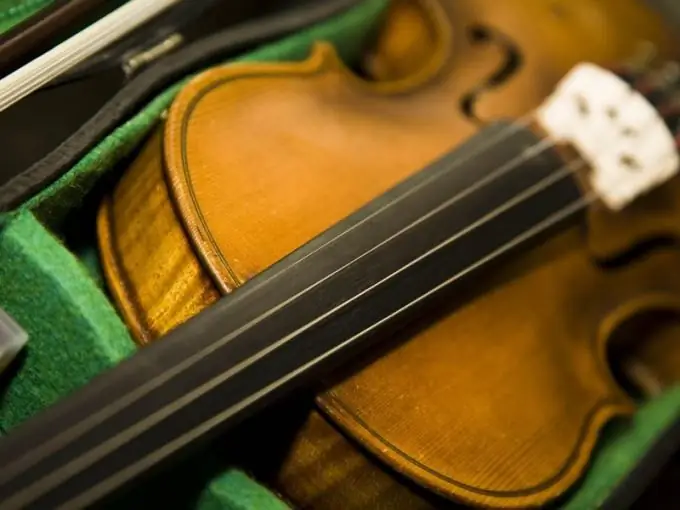- Author Antonio Harrison [email protected].
- Public 2023-12-16 07:44.
- Last modified 2025-01-22 21:44.
The chamber orchestra is the prototype of the symphony orchestra. It is characterized by a much smaller instrumental composition, in comparison with the symphonic one.

Instructions
Step 1
Chamber orchestras are the forerunners of symphony orchestras. Until the latter appeared in the 19th century, chamber orchestras performed secular music, sometimes accompanying vocalists. Their name comes from the Italian "camera" - "room, chamber", because chamber orchestras were a small group of musicians, often from 4 to 12 people. Often in the 17th century, such orchestras contained the ducal courts.
Step 2
A distinctive feature of a chamber orchestra is that one part is performed by one musical instrument. In turn, in a symphony orchestra, thanks to a much larger composition, a group of musicians plays one part in unison.
Step 3
In the process of the historical development of chamber music, chamber ensembles consisted of such musical instruments as the solo string or wind instrument and the piano; two pianos or a piano played by four hands; one or two violins, viola and cello (string trio); violin, cello and piano; piano, violin, viola and cello.
Step 4
The instrumental composition of the chamber orchestra is inconsistent, because each specific work requires the presence of certain musical instruments. But the core of any modern chamber orchestra is stringed instruments. Often the string group is represented by 6-8 violins, 2-3 violas, 2-3 cellos and double bass. For the performance of the general bass, the orchestra includes a harpsichord and bassoon. Wind instruments are often part of a chamber orchestra. Since the 20th century, the composition of chamber orchestras has been characterized by freedom, a kind of randomness of the composition, which is determined by the artistic intent.
Step 5
The repertoire of most chamber orchestras includes works by Johann Sebastian Bach, Wolfgang Amadeus Mozart, Antonio Vivaldi, Arcangelo Corelli, Tomaso Giovanni Albinoni, Georg Friedrich Handel, Georg Philip Telemann and others. In addition, the musicians perform works by contemporary composers.
Step 6
The chamber orchestra format is most convenient for functioning in small towns, since it does not require significant resources for maintenance, as, for example, a symphony orchestra. Among chamber orchestras there are many world-famous ensembles. Among them is the English Chamber Orchestra, which has already recorded more than 800 CDs with works of its own performance and gives concerts all over the world.






